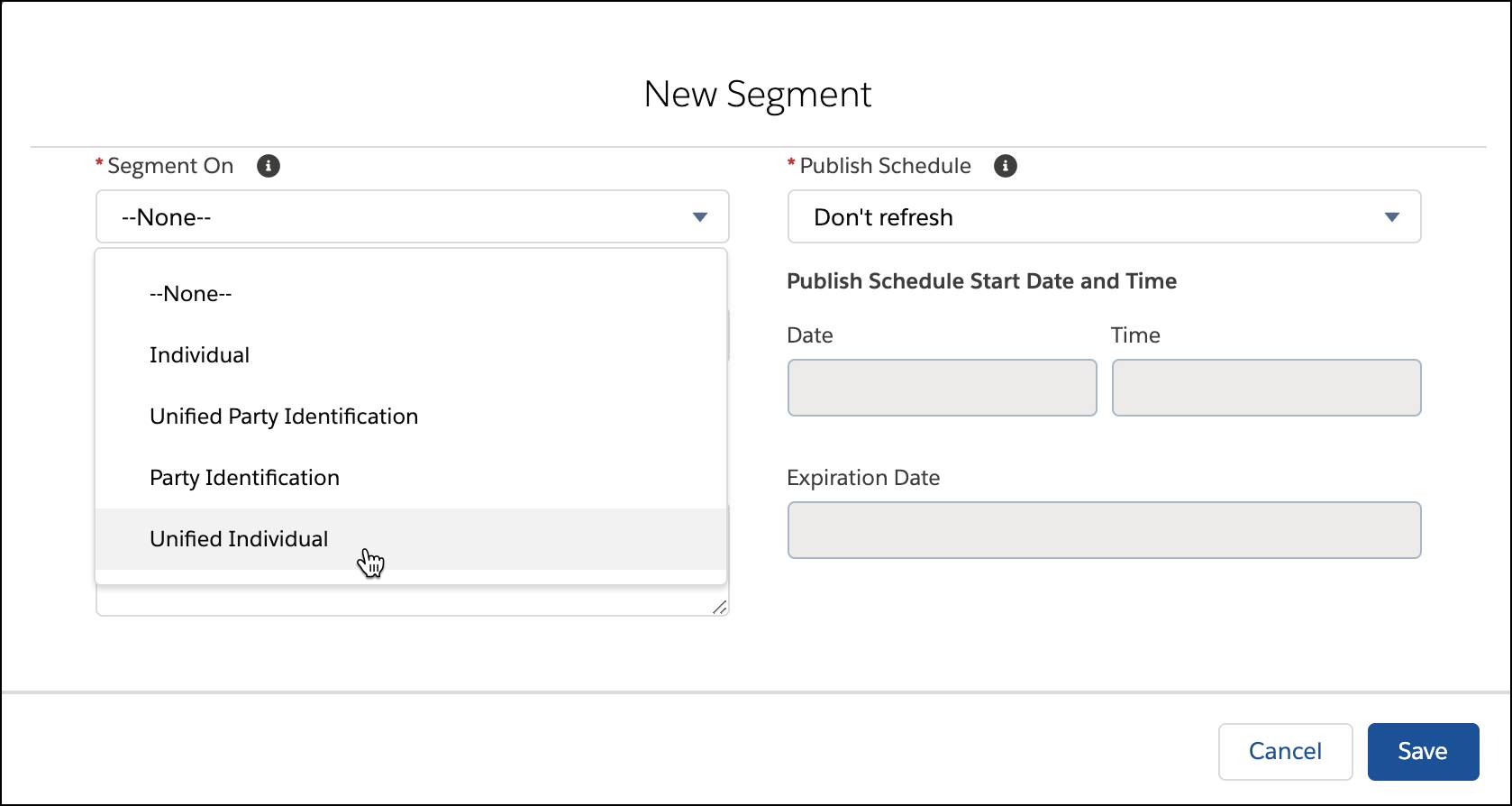Consider Data Implications for Segmentation
Learning Objectives
After completing this unit, you’ll be able to:
- Describe how your data model impacts segmentation.
- Identify the types of resolution rules available in Data Cloud.
Understand Your Data
It’s important to work with your data aware specialist to understand the data coming into your account and how it’s tied to your data model. In the Data Cloud for Marketing Basics module, we discussed the Customer 360 Data Model. As you begin to build your segments, it’s helpful to recall some data model terminology.
Subject Area
A subject area is a business concept that helps connect data points based on a standard model. Common data model examples are Party (your customers) and Sales Orders (what they purchased).
Data Model Object (DMO)
An object in the data model created by ingested data streams and insights. DMOs can be standard or can be custom, based on your business needs. A DMO is similar to a Marketing Cloud Engagement data extension (which is a standard database table) in that it is an object that stores data such as leads, product info, customer info, and so on.
Attributes
We discussed attributes in the first unit, so here’s a quick refresher. An attribute is a unique characteristic of a data model object—for example, a customer’s first name. This is similar to a data extension field in Marketing Cloud Engagement.
Data and Segmentation
Remember, you use the attribute library to create segments in Data Cloud. And the library is based on the ingested and mapped data streams that make up your data model and the relationships created. That’s why it’s important that you spend some quality time with the person managing your data model—before you begin creating segments. You should work together to answer these questions.
- Are you using the standard data model using predefined data bundles?
- What attributes do those data bundles offer for segmentation?
- Do you want to use data from specific Marketing Cloud Engagement data extensions to create segments?
- What data do you want to be cleaned?
- For example, do you want the value of “United States” in the country attribute to be standardized to US versus U.S.?
- What data sources have the most up-to-date information to be used in Identity Resolution rulesets?
- For example, your Marketing Cloud Engagement data might have the most up-to-date email, but your product orders might have the most up-to-date home address based on shipping.
- How often are data sources being refreshed?
- Do you need your data from a cloud storage data stream daily? Weekly? What about Marketing Cloud Engagement data?
Segment On
When you create a new segment in Data Cloud, you first need to select what is referred to as Segment On.
Segment On defines the target entity on which the segment builds. This is another aspect of segmentation that is dependent on your data model and what entity has been marked as “profile” while creating data streams and data modeling. Let’s review two common selections for Segment On.
- Individuals: A specific person or customer from a specific data source, like Marketing Cloud Engagement.
- Unified individual: A customer profile whose data has been merged based on multiple sources using Identity Resolution rules.
We recommend using the unified individual. Why? No more duplicate contacts! Intrigued? Don’t miss this next part.
Identity Resolution
Data Cloud uses identity resolution rulesets to resolve data across multiple data sources and helps you create one record for each customer, regardless of where the data came from. What’s the benefit to you? Better control of your data and, as we revealed earlier, fewer duplicate contacts. Learn more about the concepts of data and identity in this video.
There are two types of rules that make up a ruleset: match and reconciliation.
- Match rules are used to link together multiple records in a unified customer profile. They let you specify the conditions to match and unify a record. For example, you can match based on a fuzzy name and an email address. These can be mixed and matched based on your use case. It’s up to you to determine what makes sense for your organization. If your organization stores phone numbers more regularly than email addresses, you might want to use the rule to match on a normalized phone number.
- Reconciliation rules determine how to select profile attributes in the unified customer profile. In other words, it allows you to select criteria, like last updated or most occurring, to select what data to use in the profile. As a marketer, this would be helpful for values like home address, where a customer might change their address in one system, but not in another. That’s why it’s helpful to know which data source has the most up-to-date information about your customers.
Overall, creating filtered segments is easier if you understand your data model and the rules driving the attributes available to you. In the next unit, we review filter logic and examples.
